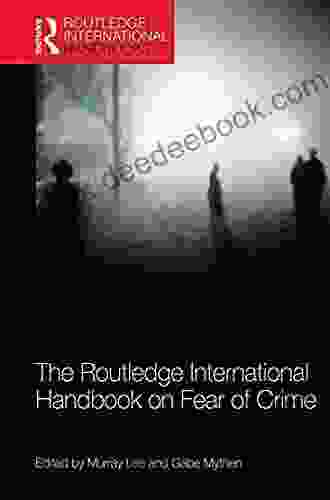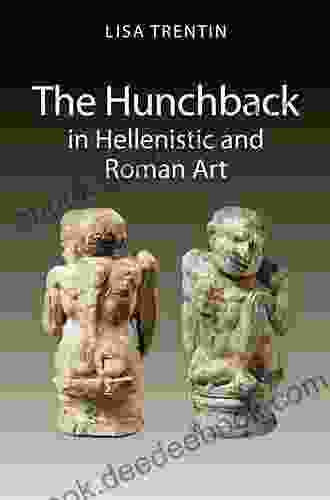Trauma-Induced Coagulopathy: A Comprehensive Guide

Trauma-induced coagulopathy (TIC) is a potentially life-threatening condition that can occur after severe trauma.
5 out of 5
| Language | : | English |
| File size | : | 17713 KB |
| Text-to-Speech | : | Enabled |
| Screen Reader | : | Supported |
| Enhanced typesetting | : | Enabled |
| Print length | : | 632 pages |
TIC is characterized by a complex cascade of events that lead to impaired blood clotting. This can result in excessive bleeding and difficulty controlling bleeding during surgery or other medical procedures.
The exact cause of TIC is not fully understood, but it is thought to be related to a combination of factors, including:
- Tissue damage and release of procoagulant factors
- Hypothermia
- Acidosis
- Shock
- Disseminated intravascular coagulation (DIC)
TIC can be difficult to diagnose, as it can mimic other conditions, such as hypovolemic shock. Blood tests may be used to confirm the diagnosis of TIC.
Treatment of TIC involves addressing the underlying cause and providing supportive care, such as blood transfusions and clotting factors. In severe cases, surgery may be necessary to control bleeding.
Causes of Trauma-Induced Coagulopathy
TIC is caused by a complex interaction of multiple factors, including:
- Tissue damage: Severe trauma can cause extensive tissue damage, which releases procoagulant factors into the bloodstream.
- Hypothermia: Hypothermia, or a decrease in body temperature, can impair platelet function and lead to bleeding.
- Acidosis: Acidosis, or a decrease in blood pH, can also impair platelet function and lead to bleeding.
- Shock: Shock, or a decrease in blood pressure, can lead to decreased tissue perfusion and impaired blood clotting.
- Disseminated intravascular coagulation (DIC): DIC is a condition in which blood clots form throughout the body, which can lead to bleeding and organ damage.
Symptoms of Trauma-Induced Coagulopathy
The symptoms of TIC can vary depending on the severity of the condition. Common symptoms include:
- Excessive bleeding from wounds
- Difficulty controlling bleeding during surgery or other medical procedures
- Bruising
- Petechiae (small, red dots on the skin caused by bleeding)
- Hematoma (collection of blood outside of a blood vessel)
- Organ failure
Diagnosis of Trauma-Induced Coagulopathy
TIC can be difficult to diagnose, as it can mimic other conditions, such as hypovolemic shock. Blood tests may be used to confirm the diagnosis of TIC.
Common blood tests that may be used to diagnose TIC include:
- Complete blood count (CBC): A CBC measures the number of red blood cells, white blood cells, and platelets in the blood.
- Prothrombin time (PT): A PT measures the time it takes for blood to clot.
- Activated partial thromboplastin time (aPTT): An aPTT measures the time it takes for blood to clot after it has been activated.
- Fibrinogen level: A fibrinogen level measures the amount of fibrinogen in the blood. Fibrinogen is a protein that is necessary for blood clotting.
- D-dimer: A D-dimer is a protein that is produced when blood clots are broken down. A high D-dimer level may indicate that DIC is present.
Treatment of Trauma-Induced Coagulopathy
The treatment of TIC involves addressing the underlying cause and providing supportive care.
Treatment for the underlying cause of TIC may include:
- Surgery: Surgery may be necessary to control bleeding or remove damaged tissue.
- Blood transfusions: Blood transfusions may be necessary to replace lost blood and improve clotting.
- Clotting factors: Clotting factors may be given to improve blood clotting.
- Hypothermia: Hypothermia should be treated by warming the patient.
- Acidosis: Acidosis should be treated by correcting the underlying cause.
- Shock: Shock should be treated by improving blood pressure and tissue perfusion.
- Disseminated intravascular coagulation (DIC): DIC should be treated with anticoagulant medications to prevent further blood clotting.
Supportive care for TIC may include:
- Monitoring vital signs: Vital signs, such as blood pressure, heart rate, and respiratory rate, should be monitored closely.
- Maintaining fluid balance: Fluids should be given to maintain fluid balance and prevent dehydration.
- Administering pain medication: Pain medication may be given to relieve pain and discomfort.
Prevention of Trauma-Induced Coagulopathy
There is no sure way to prevent TIC, but there are some measures that can be taken to reduce the risk of developing this condition. These measures include:
- Wearing protective gear: Wearing protective gear, such as helmets and seatbelts, can help to prevent severe trauma.
- Avoiding risky activities: Avoiding risky activities, such as driving under the influence of alcohol or drugs, can help to prevent trauma.
- Getting regular medical checkups: Getting regular medical checkups can help to identify and manage underlying health conditions that may increase the risk of TIC.
Trauma-induced coagulopathy (TIC) is a serious condition that can occur after severe trauma. TIC is characterized by impaired blood clotting, which can lead to excessive bleeding and difficulty controlling bleeding during surgery or other medical procedures.
The exact cause of TIC is not fully understood, but it is thought to be related to a combination of factors, including tissue damage, hypothermia, acidosis, shock, and disseminated intravascular coagulation (DIC).
TIC can be difficult to diagnose, as it can mimic other conditions, such as hypovolemic shock. Blood tests may be used to confirm the diagnosis of TIC.
Treatment of TIC involves addressing the underlying cause and providing supportive care. Surgery, blood transfusions, clotting factors, hypothermia treatment, acidosis correction, shock treatment, and anticoagulant medications may be used to treat TIC.
There is no sure way to prevent TIC, but there are some measures that can be taken to reduce the risk of developing this condition. These measures include wearing protective gear, avoiding risky activities, and getting regular medical checkups.
5 out of 5
| Language | : | English |
| File size | : | 17713 KB |
| Text-to-Speech | : | Enabled |
| Screen Reader | : | Supported |
| Enhanced typesetting | : | Enabled |
| Print length | : | 632 pages |
Do you want to contribute by writing guest posts on this blog?
Please contact us and send us a resume of previous articles that you have written.
 Book
Book Novel
Novel Text
Text Reader
Reader Library
Library Paperback
Paperback E-book
E-book Magazine
Magazine Newspaper
Newspaper Paragraph
Paragraph Bookmark
Bookmark Shelf
Shelf Glossary
Glossary Foreword
Foreword Preface
Preface Synopsis
Synopsis Annotation
Annotation Scroll
Scroll Classics
Classics Library card
Library card Memoir
Memoir Dictionary
Dictionary Thesaurus
Thesaurus Narrator
Narrator Librarian
Librarian Catalog
Catalog Stacks
Stacks Archives
Archives Periodicals
Periodicals Study
Study Research
Research Rare Books
Rare Books Special Collections
Special Collections Literacy
Literacy Study Group
Study Group Thesis
Thesis Dissertation
Dissertation Reading List
Reading List Book Club
Book Club Theory
Theory John V C Nye
John V C Nye Kelli Rodriguez
Kelli Rodriguez Kerric Harvey
Kerric Harvey E P Clark
E P Clark Sarah Maddison
Sarah Maddison Leonard Cohen
Leonard Cohen Joe Salerno
Joe Salerno John Lamberton Harper
John Lamberton Harper J Davidson Frame
J Davidson Frame Jeff Billings
Jeff Billings Dave Gelly
Dave Gelly Jorge Galindo Molina
Jorge Galindo Molina B Scott Christmas
B Scott Christmas Philippe Besson
Philippe Besson Liliana Buchtik
Liliana Buchtik Carolyn Harris
Carolyn Harris B B Blaque
B B Blaque Marguerite De Navarre
Marguerite De Navarre Orin Starn
Orin Starn Cindy Nichols
Cindy Nichols
Light bulbAdvertise smarter! Our strategic ad space ensures maximum exposure. Reserve your spot today!

 George HayesThe Short Little Guide to College Happiness: A Comprehensive Guide to Finding...
George HayesThe Short Little Guide to College Happiness: A Comprehensive Guide to Finding...
 Alex FosterJohann Sebastian Bach: Selections from the Notebook for Anna Magdalena Bach:...
Alex FosterJohann Sebastian Bach: Selections from the Notebook for Anna Magdalena Bach:...
 Willie BlairThe Ballet Lover's Companion: Marguerite de Navarre, the Renaissance Queen...
Willie BlairThe Ballet Lover's Companion: Marguerite de Navarre, the Renaissance Queen... Israel BellFollow ·10.4k
Israel BellFollow ·10.4k Winston HayesFollow ·13.8k
Winston HayesFollow ·13.8k Clay PowellFollow ·19k
Clay PowellFollow ·19k Caleb LongFollow ·12.5k
Caleb LongFollow ·12.5k Albert ReedFollow ·13.2k
Albert ReedFollow ·13.2k Forrest BlairFollow ·5.4k
Forrest BlairFollow ·5.4k Howard BlairFollow ·5.4k
Howard BlairFollow ·5.4k Demetrius CarterFollow ·13.9k
Demetrius CarterFollow ·13.9k

 E.E. Cummings
E.E. CummingsThe Routledge International Handbook on Fear of Crime
Fear of crime is a serious problem that can...

 Fletcher Mitchell
Fletcher MitchellThe Hunchback in Hellenistic and Roman Art: A...
The hunchback, or kyphosis, is a physical...

 Victor Turner
Victor TurnerA Comprehensive Guide to Needle Felting for Moms:...
Needle felting, a captivating craft...

 Joseph Foster
Joseph FosterWhere is Scandinavia?
Scandinavia is a region in...

 Leon Foster
Leon FosterNovel Shades of Magic: A Masterpiece of Magical...
An Enthralling...
5 out of 5
| Language | : | English |
| File size | : | 17713 KB |
| Text-to-Speech | : | Enabled |
| Screen Reader | : | Supported |
| Enhanced typesetting | : | Enabled |
| Print length | : | 632 pages |








